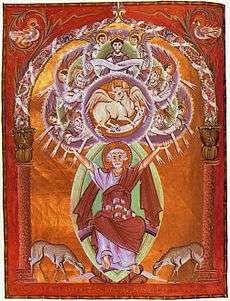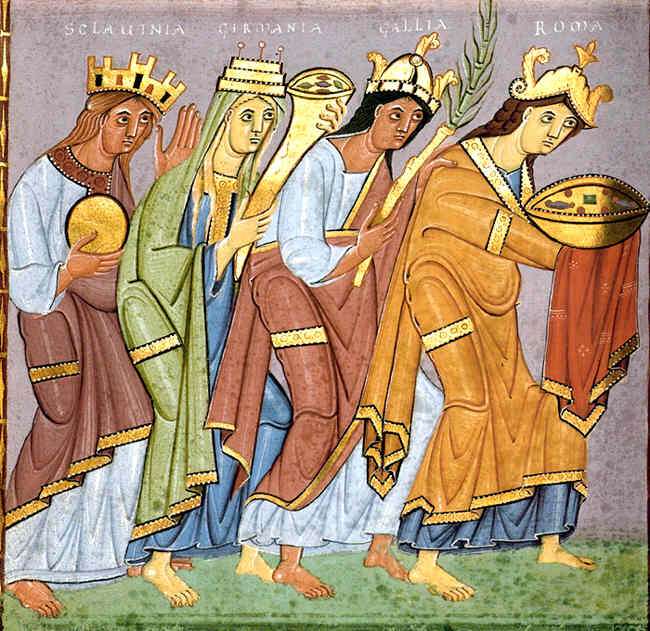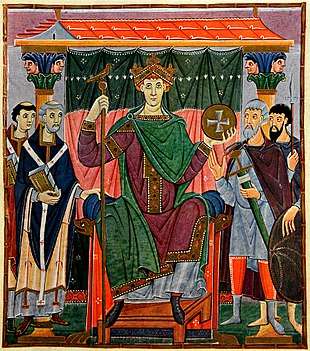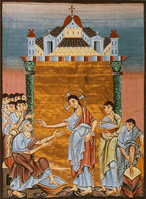Gospels of Otto III
 Portrait of Luke the Evangelist from the Gospels of Otto III. | |
|
|
The Gospels of Otto III (Munich, Bayerische Staatsbibliothek, Clm 4453) is a late 10th or early 11th century illuminated Gospel Book.[2] The manuscript is a major example of Ottonian illumination.
It was produced at Reichenau Abbey in the workshop headed by the monk Liuthar for Otto III, the son of Otto II, who became king of Germany when he was three, and the Byzantine Princess Theophanu. The manuscript has 276 folios which measure 334mm by 242mm, containing the Vulgate versions of the four gospels plus prefatory matter including the Eusebian canon tables. The illumination includes a page miniature of the enthroned Otto III being brought gifts by personifications of the four provinces of the Empire, Roma, Gallia, Germania, and Sclavinia. The manuscript contains an additional 34 miniatures, including four evangelist portraits. In addition there are 12 decorated pages of canon tables, and each gospel is introduced by a full page decorated incipit page.
The style of illustration is strongly influenced by Byzantine art. The Ottonian emperors sought to emulate the Eastern Roman empire's courtly grandeur; "the hieratic effect and ponderous ceremonial impact of the miniatures mark a return to the icon-like quality of the Byzantine consular diptychs of the sixth century".[3]
 Personifications of Sclavinia, Germany, Gaul and Rome bringing gifts to Otto III.
Personifications of Sclavinia, Germany, Gaul and Rome bringing gifts to Otto III. Otto III enthroned.
Otto III enthroned. Christ washing the Apostles' feet.
Christ washing the Apostles' feet.
See also
References
| Wikimedia Commons has media related to Gospels of Otto III. |
- ↑ Petzold, Andreas. "Gospel Book of Otto III". Smarthistory at Khan Academy.
- ↑ Walther, Ingo F. and Norbert Wolf. Codices Illustres: The world's most famous illuminated manuscripts, 400 to 1600. Köln, TASCHEN, 2005.
- ↑ Calkins, Robert G. (1979). Monuments of Medieval Art. Cornell University Press. pp. 75–76. ISBN 0-8014-9306-4.
External links
- Online facsimile of Munich, Bayerische Staatsbibliothek, Clm 4453
- Iconographic analysis of the miniatures in the Warburg Institute Iconographic Database, with links to the online facsimile of the Bayerische Staatsbibliothek